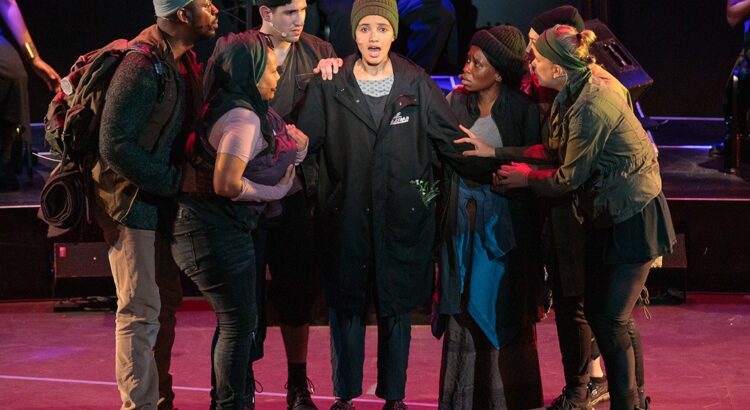Concisely told a non-cliche, non-overdramatic tale of the apocalypse with a real and rich cultural background.
Parable of the Sower was a visually and sonically satisfying opera. Based on the Science fiction novel written by Octavia Butler, Toshi Reagon had created an apocalypse opera that tells the story concisely with limitedly-selected stage designs. The story follows a young teenager, Lauren, who questions the belief of her father, who is a professor and a figure in Baptist, while she lives in a protected community in her neighborhood and later set out on an uncertain journey to find a new home after an attack that destroys her community. Even though the story has quite a drama in it, it is not reflected in the stage design. Instead of visualizing the dramatic events in the plot on stage, the stage focused on three designs: a bench and a structure covered in white cloth to symbolize the peaceful, secure, closed area where Lauren and her community are staying, blackout with the spotlight only on Lauren’s face, drawing all attention on her and her tragic expression, when she sings that her father had not returned after going to work, and later on, an empty stage where people wondered all around it to emphasize the people’s wandering after they lost their community with an abstract painting that changed the shades according to the beat of the scene.
My main interest in viewing this production was 1) how the traditional genre of opera had connected with the new modern theme of Apocalypse and 2) how the musical heritage of African-Americans was integrated into the performance. For the first question, the production team has proven that operas do not have to be combined with traditional themes and with dresses with ruffles. Moreover, the emphasis on the songs was made clear with the limited stage designs. If the production team had tried to bring too much of what was going on stage to stage design, that would have diffused the audience’s attention, not to mention that those explosions and violence would have been hard to create satisfactorily. Instead, the production team went beyond by pointing out the resemblance between the Apocalyptic world and the current society – during the part where Toshi broke the fourth wall and invited the audience to sing along, the mention of some real and very familiar companies’ names made the connection clear. For the second part, some music definitely made clear the reference to Gospel and Rap. However, they went beyond to integrate different formats of music – rock, folk, and R&B, making this performance a culturally interesting work.
In all, this performance tosses an interesting food of thoughts and was visually and sonically satisfying in itself. I hope more performances like these will fill our stages.


